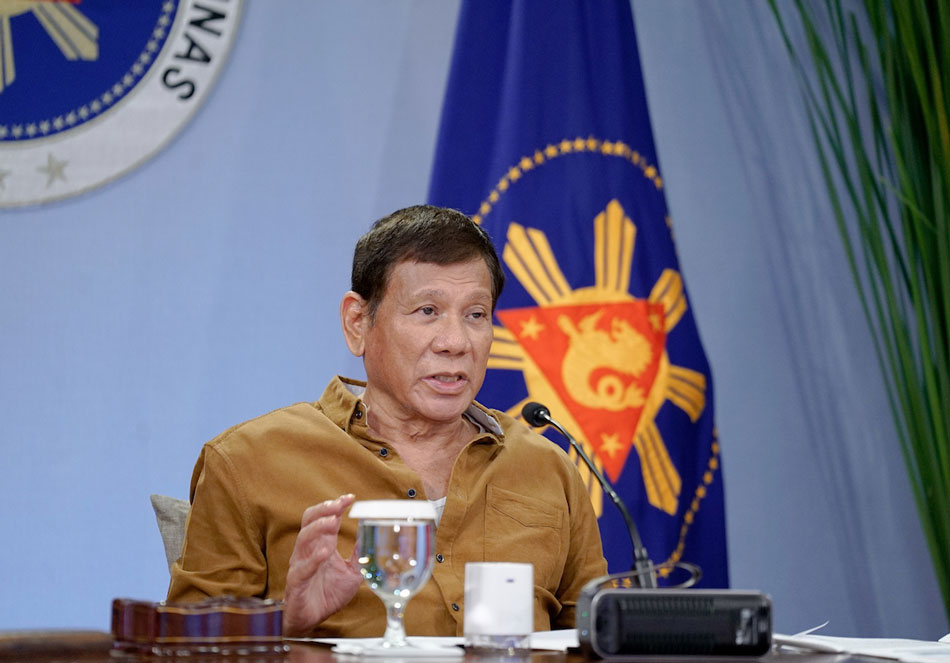
With more than a million COVID-19 cases, government is scrambling to put a positive spin on our dire situation. But are we really better off than India and other countries?
On April 26, the Philippines recorded over one million COVID-19 infections, a grim milestone that government is trying to downplay by drawing a contrast with the situation in India.
With the number of cases and deaths rising daily, government officials, government media outlets, and social media personalities supportive of the administration have been making two bold assertions: “our situation is better than India” and “we are doing better.”
The messaging direction is contained in a memorandum dated April 27, the day after the number of cases breached the one million mark. It was signed by Undersecretary George Apacible, Officer-In-Charge of the Presidential Communications Operations Office (PCOO).
A copy of the memo circulated on social media the same day it was issued.

The leaked memo, which has been officially confirmed, cites “a directive of the President” for all government media platforms” “to carry regular world updates about COVID-19, specifically to convey to the public that the Philippines is faring better than many other countries in addressing the pandemic.”
A PCOO official, interviewed for comment, said, ”There is nothing wrong with this, nor is it a lie, it is simply amplifying facts.”

The official then went on to claim that the Philippines has achieved “a reputable and efficient response to the virus as compared to some developed, more advanced, and less densely-populated countries.” She also cited reports that rank the Philippines high in terms of vaccine roll-out.
According to the official, “it says much about our health capabilities and commitment to ensure the recovery of those who have contracted the virus.”
But are we really doing better? The facts as presented by government are being challenged.
In a Twitter post, journalist Raffy Tima said what is happening in India “has already happened in the Philippines, albeit on a smaller scale. I think that should be acknowledged.”
“During the COVID surge last month, hospitals became full, patients died in parking lots outside hospitals and oxygen was in short supply. Having said that, to compare the situation of a country with 1.3 billion people and one with 110 million is unfair,” he said.
In another tweet, Tima added: “But if you really want to make an equivalence, imagine a Philippines with a 1.3 billion population and a healthcare system like we have now.”


Also on Twitter, a page called Philippines Vaccine Tracker showed data and graphs collated from official sources disproving the claims.
The page said while Brunei and Vietnam rank low in vaccine roll-out, they have the lowest number of COVID-19 cases in Southeast Asia.
As of April 25, it said Brunei had a total of 233 cases with three deaths, while Vietnam had 2,843 cases and 35 deaths. On that date, the Philippines recorded 997,523 cases, with16,783 deaths, according to the Department of Health (DOH).

And while the Philippines ranks third in terms of vaccine doses administered, we are third from last in terms of population.




Netizens have also been sharing reports that the Philippines is now ranked 45 in Bloomberg's list of "best and worst places to be during the pandemic,” dropping 10 spots since last month.



Drawing a contrast with India may not also be the correct approach, since the Philippines is in danger of facing a similar surge in infections, according to a medical expert from the independent OCTA Research Group.
Dr Rodrigo Ong has been quoted by the South China Morning Post as saying that “the Philippines was now at the ‘same crosspoint’ of about 10,000 cases per day that India had reached when authorities there decided to lift restrictions on large gatherings as they thought the virus was under control.”
The Hong Kong-based newspaper further quoted Ong as saying: “As we move towards the end of April and the possibility of further easing quarantine restrictions, this delicate balance may tip over to completely overwhelm the health care capacities.”
Faced with a surge in infections and crowded hospitals, the government placed Metro Manila and four other provinces under a Modified Enhanced Community Quarantine (MECQ) in March. The lockdown has been extended for another two weeks.
Economic planners have been pushing for an easing of restrictions to allow certain businesses and industries to reopen. This is seen as a way to revive the economy, which is considered as the worst performer in the region.
A Different Comms Manual?
The US Center for Disease Control and Prevention (CDC) published in 2002 a manual titled “Crisis and Emergency Risk Communication” to serve as a guide for communication work during times of crisis and emergencies. The manual enumerates six core principles:
- Be first
- Be right
- Be credible
- Express empathy
- Promote action
- Show respect
For many observers, however, government seems to be using a different manual, one that encourages practitioners to deny, distract, misdirect, exaggerate, sow fear, and intimidate. This is the same manual apparently used by the national leaderships of India and Brazil, two countries facing unprecedented surges in COVID-19 infections like the Philippines. - JS
If you liked what you just read and want more of Our Brew, subscribe to get notified. Just enter your email below.



Related Posts
Supreme Court Rules Trump Can Rapidly Deport Immigrants to Libya, South Sudan and Other Countries They Aren’t From
Jun 25, 2025
Israel, Iran and the US: Why 2025 is a Turning Point for the International Order
Jun 19, 2025
People to VP Sara: “Answer Charges” - Stratbase-SWS
May 30, 2025